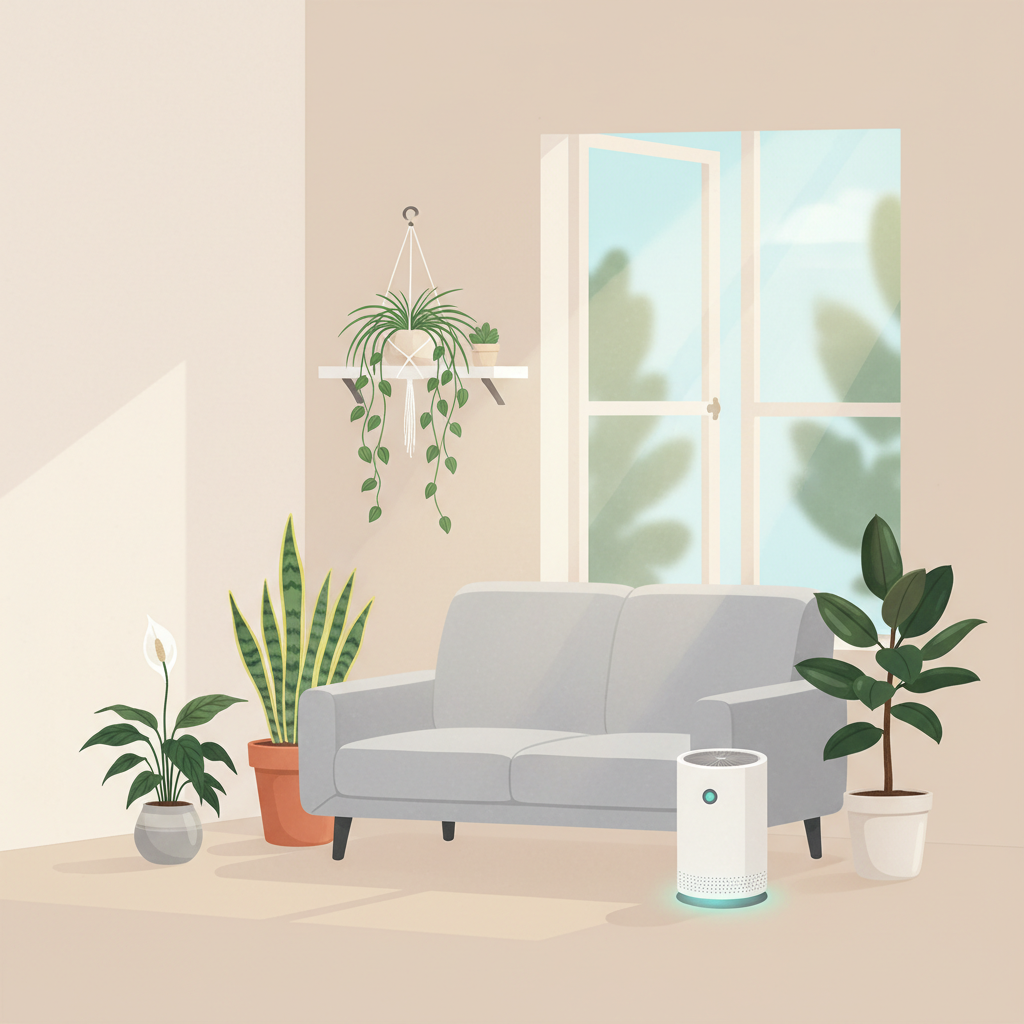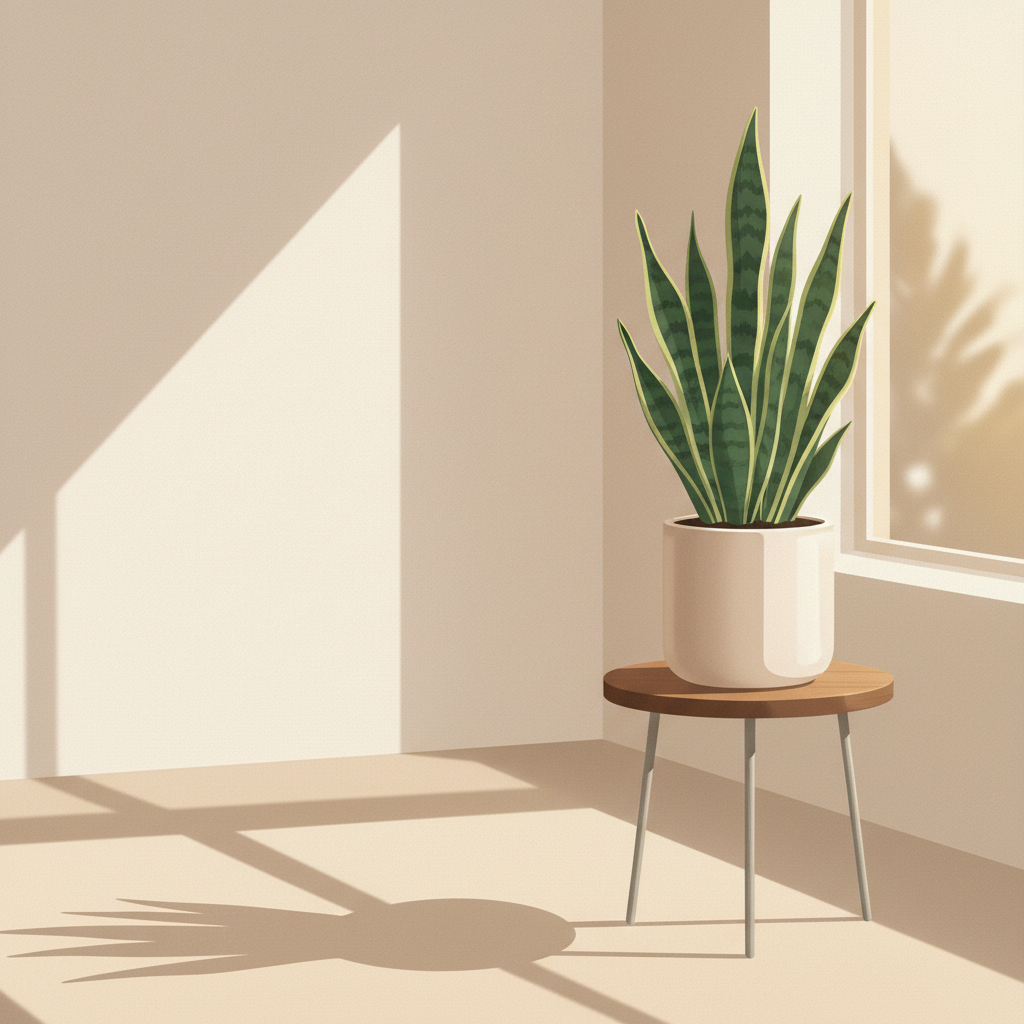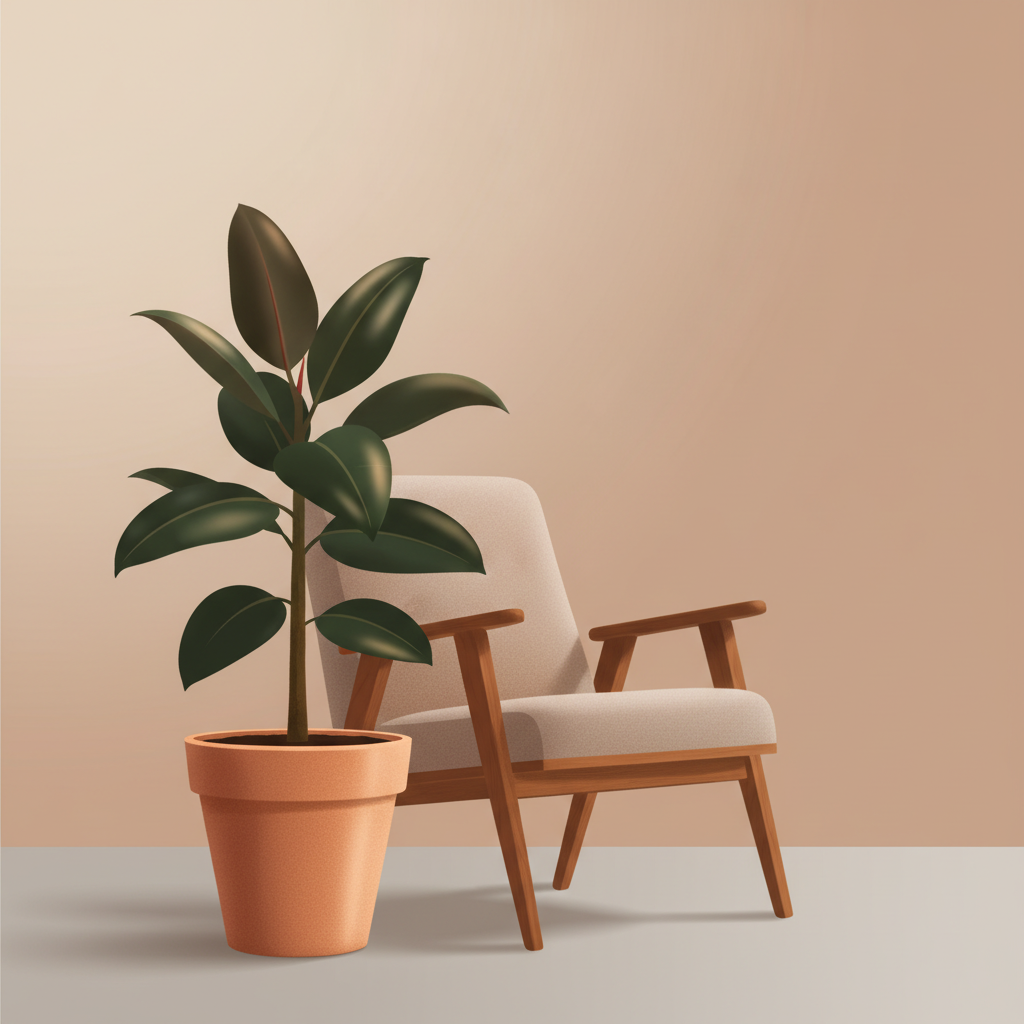Do Houseplants Clean the Air? Facts, Myths, and 5 Air-Purifying Plants
October 11, 2025

Indoor air quality is a headline topic again, and search interest for “air purifying indoor plants” keeps rising. The right response is a balanced story: celebrate the joy of foliage while setting clear expectations about what plants can—and can’t—do for indoor air. This guide arms your readers with evidence, transparent talking points, and five design-forward plant picks that reinforce your authority on healthy, beautiful spaces. Americans now spend about 90% of their time indoors, so the stakes for honest indoor air quality advice have never been higher. EPA indoor air research keeps the conversation anchored in health realities.
Houseplants Clean Air Myth: What the NASA Lab Really Found
The obsession began with NASA’s 1989 Clean Air Study, a lab experiment that placed potted plants inside sealed chambers hooked to activated carbon filters to simulate future space habitats. Those chambers were roughly a cubic meter or smaller, making them dramatically different from lived-in rooms. In that controlled environment, the plant-plus-carbon systems scrubbed a handful of volatile organic compounds (VOCs). What the study never claimed: that a single peace lily in a ventilated living room could replicate the effect. NASA’s own report makes the lab context explicit, and Drexel University researchers later quantified just how unrealistic the chamber setup is for homes.
“To rival a building’s air-handling system, you’d need between 100 and 1,000 plants per square meter of floor space.” — Waring & Cummings, Drexel University (2019)
That math translates into dozens of plants per average room. The American Lung Association echoes the verdict: plants are wonderful companions, but not stand-alone air filters. GardenMyths.com has chronicled how the narrative went viral in consumer media.
What the Latest Research Says About Air Purifying Indoor Plants
Today’s best practice is clear. The U.S. Environmental Protection Agency recommends a three-part indoor air quality stack: remove pollution sources, increase ventilation, and filter what remains. Its 2024 ventilation update urges homeowners to open windows when climate allows, upgrade to MERV-13 HVAC filters where systems permit, run bathroom and kitchen exhaust fans, and supplement with portable HEPA purifiers sized for each room. Drexel University engineers add that even the most efficient houseplants operate far slower than typical air exchange rates. Plants can join the stack—but only as décor-forward, mood-lifting teammates rather than heavy lifters.
Why Keep Plants in the Strategy?
Houseplants never needed the “miracle air scrubber” narrative to earn their place. Beyond a modest impact on VOCs, they deliver proven wellness benefits: Texas A&M researchers found that tending indoor greenery measurably lowers stress and boosts mood—powerful outcomes for brand storytelling around biophilic design and holistic wellness. Read the full study summary.
5 Best Plants for Air Quality (With Honest Expectations)
Position these classics as stylish, resilient additions to a comprehensive air-quality plan. Each is frequently cited in “best plants for air quality” lists, and each includes realistic care tips plus safety notes your audience will appreciate.
Peace Lily (Spathiphyllum spp.)

- What makes it a star: Glossy foliage and elegant white spathes headline many air purifying indoor plants roundups. Its real superpower is signaling when care is off—dramatic droops quickly flag a dry root zone.
- Care snapshot: Bright, indirect light; keep soil consistently moist but never waterlogged; wipe leaves monthly to prevent dust build-up. Clemson Cooperative Extension provides a full care profile.
- Pet note: Mildly toxic if chewed; display out of reach of pets and toddlers.
Snake Plant (Dracaena trifasciata)

- Why designers love it: Architectural, low-light tolerant, and hailed as a “set it and forget it” choice. Its slow metabolism means VOC uptake is minimal, but its sculptural presence sells.
- Care snapshot: Handles low to bright, indirect light; water only when the potting mix is completely dry; use a free-draining succulent mix to prevent root rot. Sap contains saponins that can upset pets. NC State Extension outlines the details.
- Pet note: Mildly toxic; position away from habitual nibblers.
Spider Plant (Chlorophytum comosum)

- Why it wins hearts: Playful arching foliage and baby “spiderettes” make it a crowd-pleasing hanging plant and an easy propagation story for social content.
- Care snapshot: Prefers bright, indirect light; allow the top inch of soil to dry between waterings; flush the pot occasionally to avoid fertilizer salt build-up. Refer to Clemson Cooperative Extension for deeper guidance.
- Pet note: Considered pet-safe—spotlight it for homes with curious companions.
Golden Pothos (Epipremnum aureum)

- Why stylists rely on it: Fast, forgiving growth makes it a go-to vine for styling shelves, arches, or living walls when discussing the best plants for air quality in editorial layouts.
- Care snapshot: Thrives in medium to bright, indirect light but tolerates lower levels; water when the top inch feels dry; train along trellises or moss poles for vertical impact. Penn State Extension covers propagation and care.
- Pet note: Contains calcium oxalate crystals—keep vines away from pets.
Rubber Plant (Ficus elastica)

- Why it elevates rooms: Broad, glossy leaves deliver instant drama and resonate with modern interiors. It’s often marketed as an air purifier, but its true value lies in sculptural height and humidity-friendly foliage.
- Care snapshot: Provide bright, filtered light; allow the top 1–2 inches of soil to dry between waterings; wipe leaves to keep pores open. Clemson Cooperative Extension shares care best practices.
- Pet note: Latex-rich sap can irritate skin and pets—style with awareness.
Clean-Air Action Plan
Help readers pair foliage with proven indoor air quality strategies:
- Start with source control: Choose low-VOC paints, furnishings, and cleaners; seal or store chemicals outside the living zone. (EPA indoor air guidance)
- Ventilate with intention: Open windows during healthy outdoor-air windows, run kitchen and bath exhaust fans, and explore energy-recovery ventilators for tight envelopes. (EPA ventilation update)
- Filter what remains: Upgrade HVAC filters to MERV-13 (or as high as the system tolerates) and backstop with HEPA purifiers sized appropriately for each room. (EPA indoor air guidance)
- Monitor & maintain: Swap filters on schedule, track humidity in the 30–50% range to discourage mold, and log seasonal maintenance so results compound. (EPA indoor air guidance)
- Layer biophilic wellness: Mix plants, natural textures, and daylighting cues to deliver the mood and stress-relief benefits research documents. (Texas A&M findings)
Ready for next steps?
Share this honest playbook with plant lovers, designers, or homeowners who still cite the NASA study at face value. Ground the conversation in ventilation, filtration, and source control first, then showcase these five plants as the finishing touch that brings biophilic comfort to a healthy home. When readers ask “Do houseplants really clean the air?”, you now have the science-backed story—and the supportive plant list—to answer with confidence.

